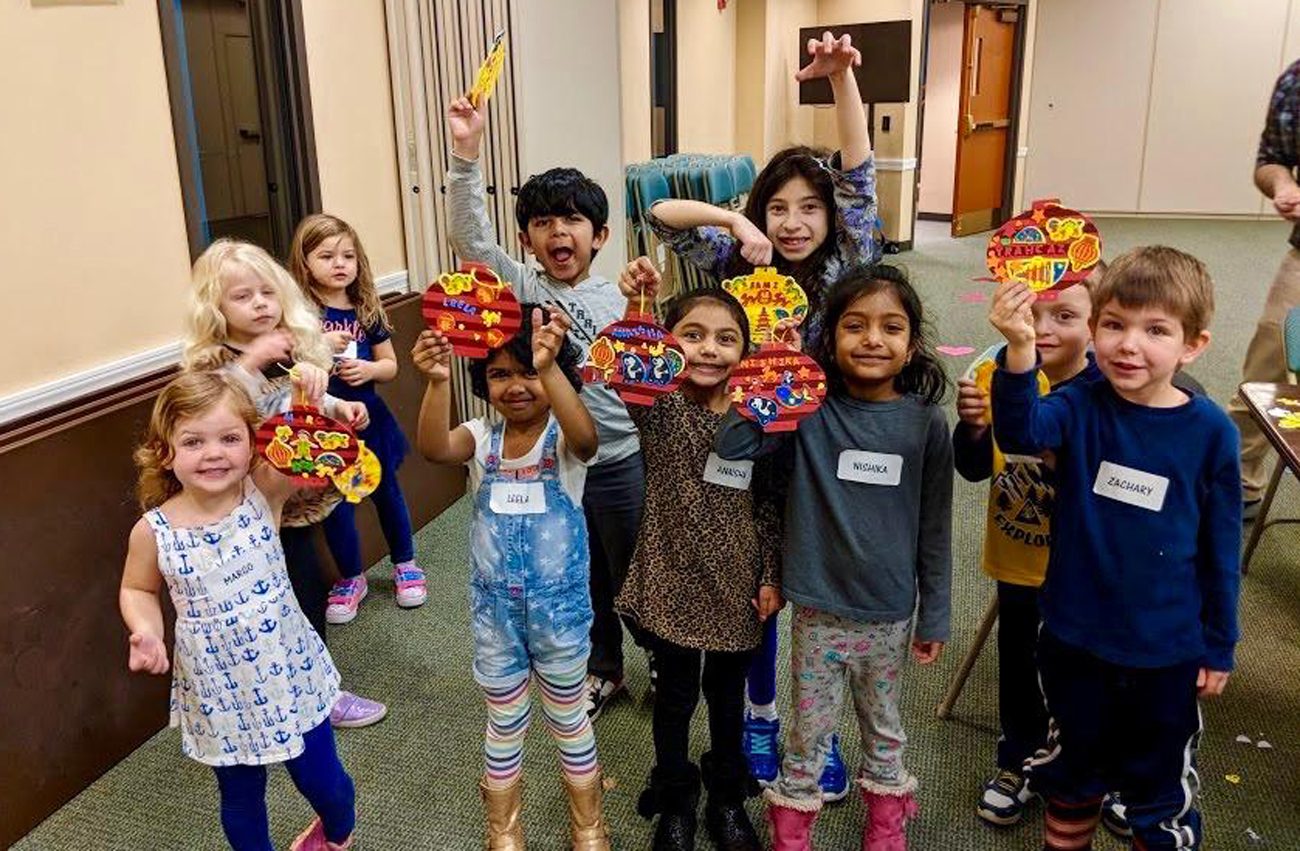What You Never Knew Your Child Could Do: Myths and Facts from Language University
Three myths surrounding your child’s abilities to learn a second language.

There are endless opinions when it comes to children learning a second language. “My child wouldn’t be interested.” “You need a native speaker at home!” “Your child is too young.” It can be daunting! So, I’ve responded to three popular myths to prove just how competent young children are when it comes to learning a second language!
Myth: “There’s no way to motivate a child into learning a second language.”
Children can learn a second language, without being coaxed. As long as they feel safe and engaged, children want to learn, especially when learning is introduced through fun. Our program, Language University, integrates music, art and physical activity as its main, teaching pillars. Music helps our students with memory and recall, while eradicating stress.1 Art boosts their creativity and comprehension,2 while physical activity through games enhances long-term retention and cognitive development.3 And we apply all of these teaching tactics, as we introduce a second language, so learning is always fun!
And not only are the children motivated, but studies prove that the earlier children are exposed to a second language, the sooner they will acquire enhanced problem-solving, reasoning skills, creativity, cognitive development, a boosted self-confidence, as well as a deeper understanding of other peoples and cultures.4 This means that learning a second language actually helps children become better students and people, and that’s a beautiful thing!

Myth: “Older children and adults are more capable of learning a foreign language than younger children.”
While it is true that older children and adults are receptive, there are major differences between how they learn. As children near puberty, they become more aware of others’ perceptions of them. This makes them quieter and less daring.5 Think middle school awkward. Middle school and high school language classes teach things like numbers and colors, to students struggling between simultaneously feeling like an adult and a child. Assigning tweens and teens to speak a foreign language in the classroom seems like a recipe in resentment.
Things don’t get better for adults either. A study found that 38% of university students fear going to foreign language classes more than any other class.6 That’s more than twice the number of people who are afraid of the dentist!7 I’m not a numbers person and that math still blows my mind!
Looking at pre-pubescent children, it’s actually their lack of maturity that makes them more fearless. Think of when children run around with underwear on their heads. That fearlessness actually helps them learn a second language. Whereas adults are wary of the unknown, children are intrigued by it. This is why they are constantly asking and asking and asking questions. And because of their love of play and their thirst for knowledge, learning is a game they want to win!
Myth: “Your child can learn a second language from ‘edutainment’ TV, like Dora the Explorer.”
No disrespect to Big Bird, but children cannot learn a second language from “edutainment” programs. Sure, Dora can teach children to say “hola,” but she isn’t engaging with them. Edutainment is missing the interactivity of a real, live human. Interestingly, that human doesn’t have to be a licensed teacher or a native speaker. Even parents with limited language skills can effectively teach their children!8 So bust out your high school French, because your child wants to learn!
And if that’s not your style– we can help! If your child’s preschool or elementary school doesn’t offer a second language (be it within their curriculum, extracurriculars, or summer camps), please reach out! See our full, five-myth version of this blog at bit.ly/5mblog!
Blog Post by Lia Andrews, Founder and Director of Language University. Lia has a Masters in French Studies from Middlebury College and she has taught children French and Spanish through fun since 2008.
If your child’s preschool or elementary school doesn’t offer a second language (be it within their curriculum, extracurriculars, or summer camps), please reach out!
References:
- Campabello, N., De Carlo, M.J., O’Neil, J., & Vacek, M.J. (2002). Music enhances learning. Saint Xavier University & Skylight Professional Development, Chicago. Retrieved from Institute of Educational Services.
- Nobori, M.. (2012, August 29). How the arts unlock the door to learning. Edutopia. Retrieved from https://www.edutopia.org/stw-arts-integration-reform-overview
- Syväoja, N., Kantomaa, M., Laine, K., Jaakkola, T., Pyhältö, K., & Tammelin, T. (2012). Physical activity and learning. Muitsiot 2012(5). Retrieved from Finnish National Board of Education.
- King, K. A., & Mackey, A. (2007). The bilingual edge: Why, when, and how to teach your child a second language. New York: HarperCollins, viii.
- Strozer, J. R. (1994). Language acquisition after puberty. Washington: Georgetown University Press, 131.
- Horwitz, E. K., Horwitz, M. B., & Cope, J. Foreign language classroom anxiety. Modern Language Journal, 70, 125-132.
- What is dental anxiety and phobia? (2013, September 18). Colgate Oral Care. Retrieved from https://www.colgate.com/en-us/oral-health/basics/dental-visits/what-is-dental-anxiety-and-phobia
- King, K. A., & Mackey, A. (2007). The bilingual edge: Why, when, and how to teach your child a second language. New York: HarperCollins, 29.
Photographs provided by Language University.



Kristin Stone December 14, 2018
I love the fact that we have the opportunity to expose our preschooler to a second language! Each week he comes home with a darling craft with a handful of new Spanish words they learned in class. He loves it and so do we!